- Clone
- 3D4 (See other available formats)
- Regulatory Status
- RUO
- Other Names
- 5-bromodeoxyuridine, bromodeoxyuridine
- Isotype
- Mouse IgG1, κ
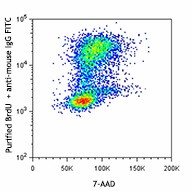
-

Human T lymphoblastic leukemia cell line, Hut-78, was pulsed with BrdU for one hour, fixed and permeabilized with cold 70% ethanol, and then stained with purified anti-BrdU (clone 3D4) followed by anti-mouse IgG FITC. -

| Cat # | Size | Price | Quantity Check Availability | ||
|---|---|---|---|---|---|
| 364101 | 25 µg | $65.00 | |||
| 364102 | 100 µg | $119.00 | |||
BrdU is a uridine derivative and a structural analog of thymidine, which can be incorporated into DNA during the S-phase of a cell cycle as a substitute for thymidine. Cells can be pulse-labeled with BrdU and analyzed with antibodies against BrdU to determine the proportion of cells in the S-phase of the cell cycle during a given interval.
Product Details
- Antibody Type
- Monoclonal
- Host Species
- Mouse
- Immunogen
- Iodouridine-conjugated ovalbumin
- Formulation
- Phosphate-buffered solution, pH 7.2, containing 0.09% sodium azide.
- Preparation
- The antibody was purified by affinity chromatography.
- Concentration
- 0.5 mg/ml
- Storage & Handling
- The antibody solution should be stored undiluted between 2°C and 8°C.
- Application
-
ICFC - Quality tested
IHC - Reported in the literature, not verified in house - Recommended Usage
-
Each lot of this antibody is quality control tested by intracellular immunofluorescent staining with flow cytometric analysis. For flow cytometric staining, the suggested use of this reagent is ≤1.0 µg per million cells in 100 µl volume. It is recommended that the reagent be titrated for optimal performance for each application.
- Application Notes
-
Additional reported applications (for the relevant formats) include: immunohistochemistry and fluorescence microscopy.
-
Application References
(PubMed link indicates BioLegend citation) -
- Dolbeare F, et al. 1983. Proc. Natl. Acad. Sci. USA 80:5573.
- Hirota K, et al. 2007. J. Exp. Med. 204:41.
- Godebu E, et al. 2008. J. Immunol. 181:1798.
- Waskow C, et al. 2008. Nat. Immunol. 9:676.
- Product Citations
-
- RRID
-
AB_2564497 (BioLegend Cat. No. 364101)
AB_2564497 (BioLegend Cat. No. 364102)
Antigen Details
- Structure
- Uridine derivative that can be incorporated into DNA and substitute thymidine residues.
- Distribution
-
Cells can be pulse-labeled with BrdU, which will be incorporated into DNA during the cell cycle's synthesis phase.
- Function
- The antibody against BrdU can be used to identify cells undergoing DNA replication during the BrdU incorporation period.
- Biology Area
- Cell Biology, Cell Cycle/DNA Replication, Immunology
- Molecular Family
- Nuclear Markers
- Antigen References
-
1. Barker JM, et al. 2013. PLoS One 8:e63692.
2. Duque A and Rakic P. 2011. J. Neurosci. 31:15205.
3. Robbins S, et al. 2011. J. Vis. Exp. 55:2855.
4. Broekhuizen CA, et al. 2010. Infect Immun. 78:954.
5. van der Wath RC, et al. 2009. PLoS One 4:e6972.
6. Dolbeare F, et al. 1985. Cytometry 6:521.
7. Gratzner HG. 1982. Science 218:474. - Gene ID
- NA
- UniProt
- View information about BrdU on UniProt.org
Other Formats
View All BrdU Reagents Request Custom Conjugation| Description | Clone | Applications |
|---|---|---|
| Purified anti-BrdU | 3D4 | ICFC,IHC |
| Alexa Fluor® 488 anti-BrdU | 3D4 | ICFC,IHC |
| FITC anti-BrdU | 3D4 | ICFC |
| Alexa Fluor® 647 anti-BrdU | 3D4 | ICFC,IHC |
| PerCP/Cyanine5.5 anti-BrdU | 3D4 | ICFC |
| Phase-Flow™ FITC BrdU Kit | 3D4 | ICFC |
| Phase-Flow™ Alexa Fluor® 647 BrdU Kit | 3D4 | ICFC |
| PE anti-BrdU | 3D4 | ICFC |
| Alexa Fluor® 700 anti-BrdU | 3D4 | ICFC |
| APC anti-BrdU | 3D4 | ICFC |
| PE/Cyanine7 anti-BrdU | 3D4 | ICFC |
| Brilliant Violet 510™ anti-BrdU | 3D4 | ICFC |
Compare Data Across All Formats
This data display is provided for general comparisons between formats.
Your actual data may vary due to variations in samples, target cells, instruments and their settings, staining conditions, and other factors.
If you need assistance with selecting the best format contact our expert technical support team.
-
Purified anti-BrdU
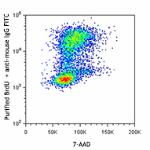
Human T lymphoblastic leukemia cell line, Hut-78, was pulsed... 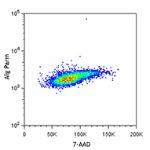
-
Alexa Fluor® 488 anti-BrdU
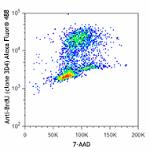
Human T lymphoblastic leukemia cell line, Hut-78, was pulsed... 
-
FITC anti-BrdU
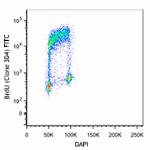
HEL cell line was pulsed with BrdU for one hour (upper panel... 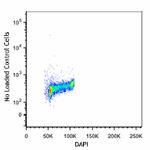
-
Alexa Fluor® 647 anti-BrdU

HEL cell line was pulsed with BrdU for 1 hour (upper panel) ... 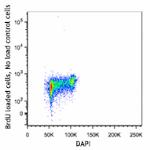
-
PerCP/Cyanine5.5 anti-BrdU

HEL cell line was pulsed with BrdU for one hour (left) or wi... -
Phase-Flow™ FITC BrdU Kit

Ramos cells loaded with BrdU for 1.5 hours (top) or left as ... 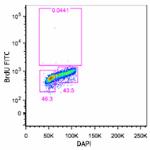
-
Phase-Flow™ Alexa Fluor® 647 BrdU Kit
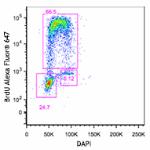
Ramos cells loaded with BrdU for 2 hours (upper panel) or le... 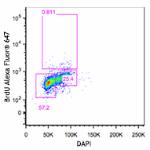
-
PE anti-BrdU

Ramos cell line was pulsed with BrdU for 1 hour (left panel)... -
Alexa Fluor® 700 anti-BrdU

Ramos cell line was pulsed with BrdU for 1 hour (left panel)... -
APC anti-BrdU

Ramos cell line was pulsed with BrdU for 1 hour (left panel)... -
PE/Cyanine7 anti-BrdU

Ramos cell line was pulsed with BrdU for 1 hour (left panel)... -
Brilliant Violet 510™ anti-BrdU

Human T lymphoblastic leukemia cell line, Hut-78, was pulsed...
